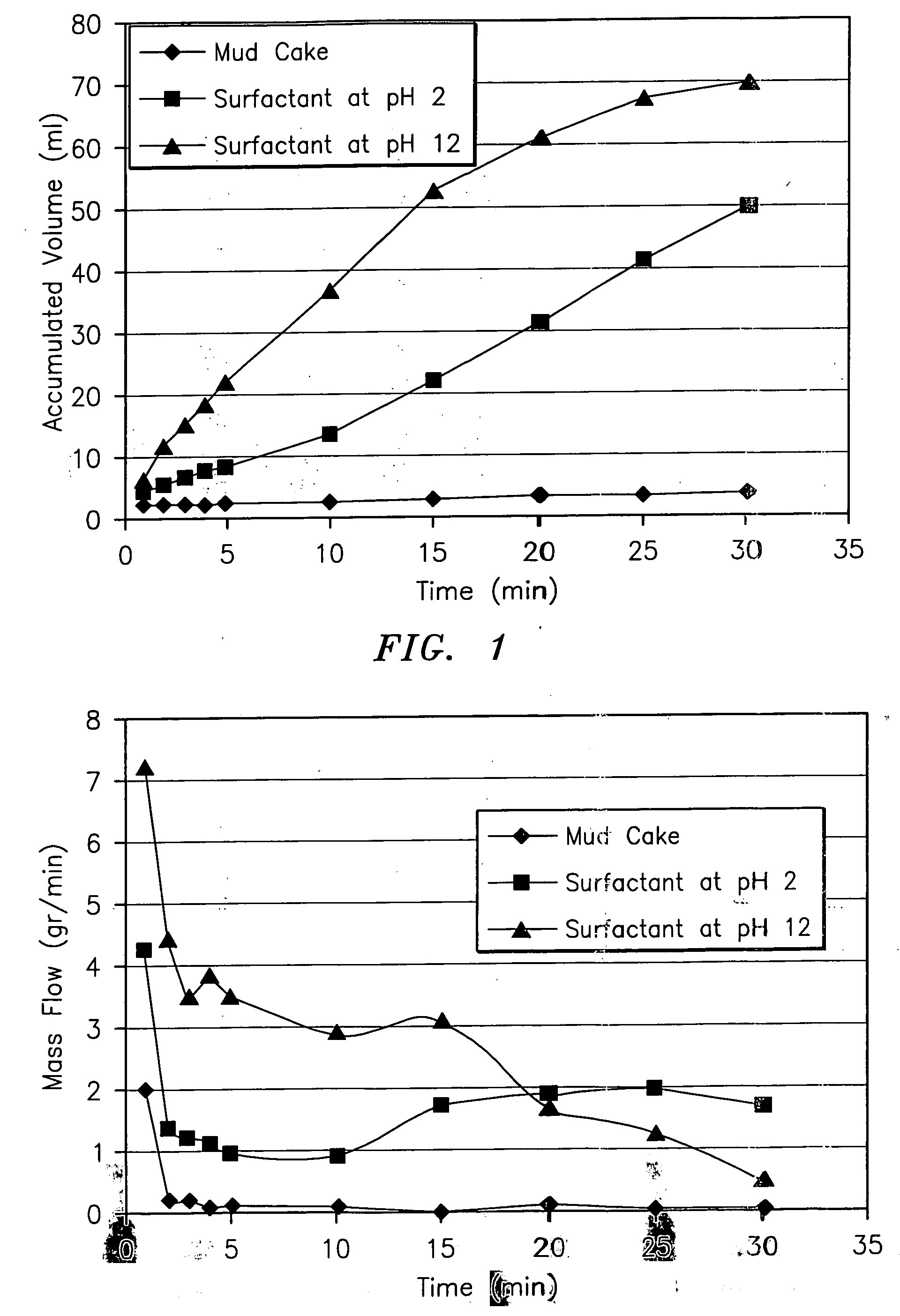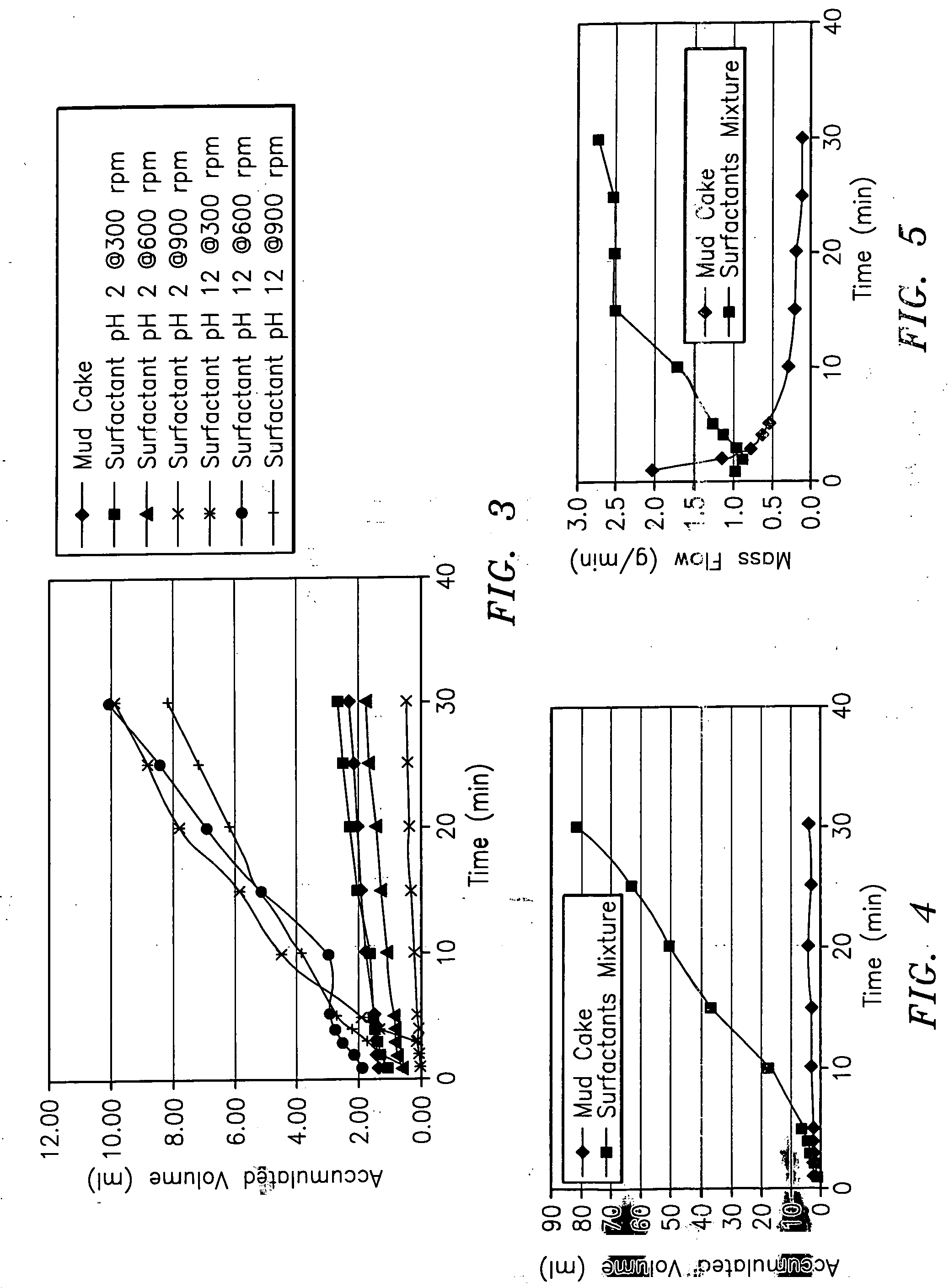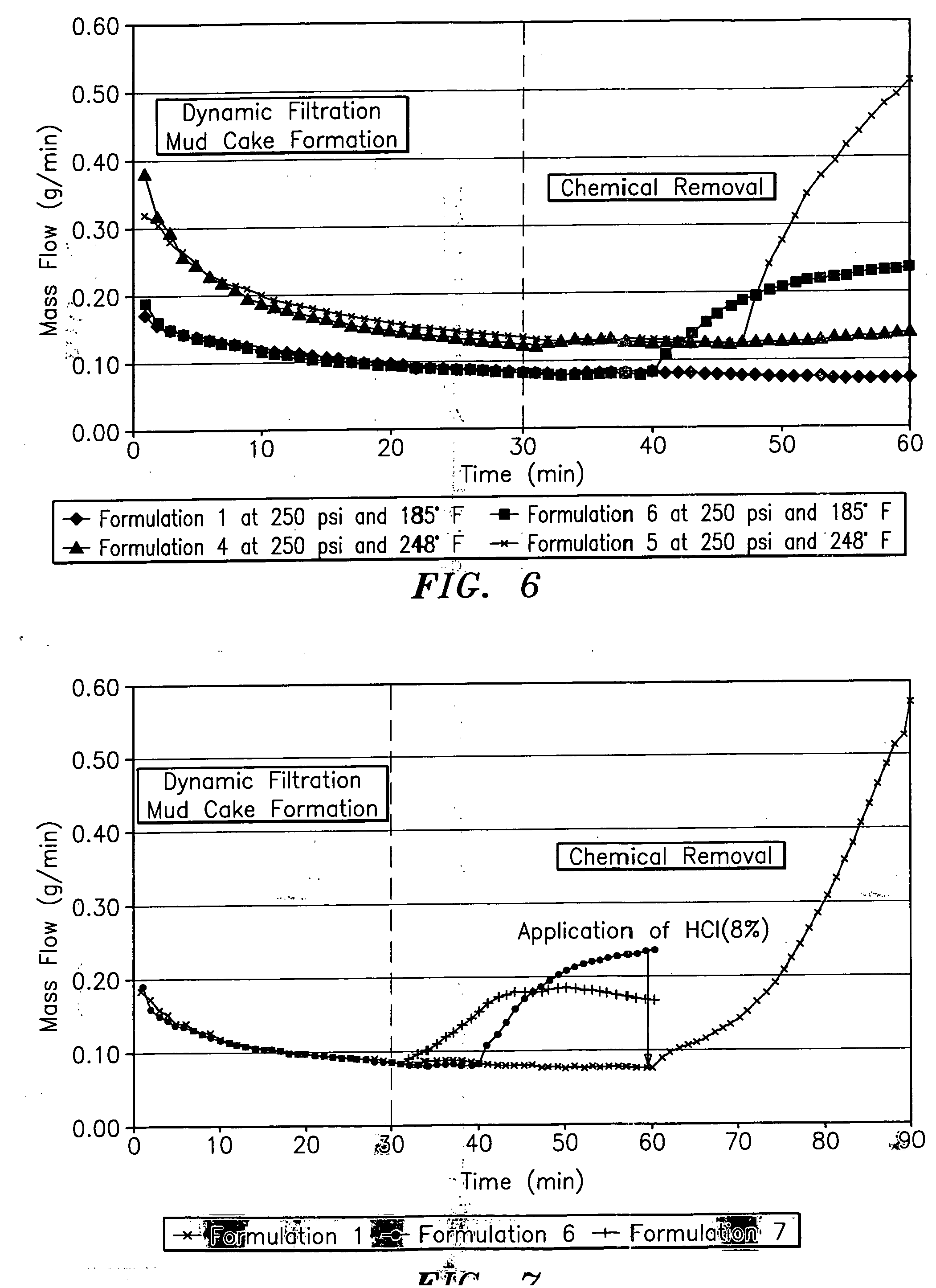Surfactant package for well treatment and method using same
a technology of surfactant and well treatment, which is applied in the direction of sealing/packing, other chemical processes, well accessories, etc., can solve the problems of mud cake left on the walls of the hole, poor cementation, and increased cementing problems, so as to speed up the removal of mud cake
- Summary
- Abstract
- Description
- Claims
- Application Information
AI Technical Summary
Benefits of technology
Problems solved by technology
Method used
Image
Examples
example 1
[0049] In this example, a surfactant component having a high HLB value was used to remove a mud cake formed with gasoil from a test formation. The system was an INTOIL® system formulated with 100% gasoil. The non-ionic surfactant component was tridecanol having an HLB of 15. This surfactant was tested at a pH of 2 and a pH of 12, at a temperature of 248° F., 500 psi and 300 rpm for 30 minutes. This testing was carried out in a mud cake evaluation cell.
[0050] The testing shows that while the mud cake itself provides a negligible amount of accumulated volume and mass flow over time, the high HLB surfactant component of the present invention at low and high pH is very effective at removal of the mud cake, or lifting of the mud cake, as shown by the increasing accumulated volume levels of FIG. 1 and the mass flow of FIG. 2.
example 2
[0051] In this example, a similar system was studied, that is, an ethoxylated tridecanol system, 10%, at a pH of 2 and 12. These systems were tested using both mud cake formed from mineral oil and mud cake from gasoil. FIG. 3 shows the results in terms of accumulated volume over time, and the values obtained with the mineral oil are not nearly as good as those obtained with the gasoil. Thus, a quite different result is experienced between gasoil and mineral oil.
example 3
[0052] Taking the results of Examples 1 and 2 into consideration, a synergistic effect was detected with the different surfactants in a surfactant blend. A surfactant blend in accordance with the present invention and having composition as listed in Table 1 below was used on the same mineral oil mud cake, and FIGS. 4 and 5 show the results in terms of accumulated volume and mass flow in connection with same. These figures, measured at a pH of 12 and 248° F., 500 psi and 300 rpm for about 30 minutes, show quite efficient and effective lifting of the mud cake in accordance with the present invention.
PUM
| Property | Measurement | Unit |
|---|---|---|
| temperature | aaaaa | aaaaa |
| pH | aaaaa | aaaaa |
| pH | aaaaa | aaaaa |
Abstract
Description
Claims
Application Information
 Login to View More
Login to View More - R&D
- Intellectual Property
- Life Sciences
- Materials
- Tech Scout
- Unparalleled Data Quality
- Higher Quality Content
- 60% Fewer Hallucinations
Browse by: Latest US Patents, China's latest patents, Technical Efficacy Thesaurus, Application Domain, Technology Topic, Popular Technical Reports.
© 2025 PatSnap. All rights reserved.Legal|Privacy policy|Modern Slavery Act Transparency Statement|Sitemap|About US| Contact US: help@patsnap.com



